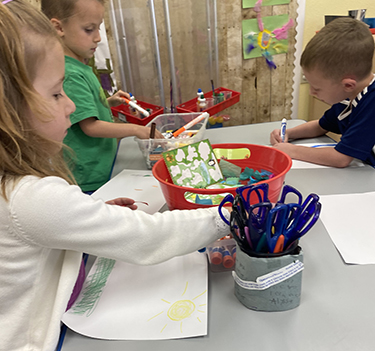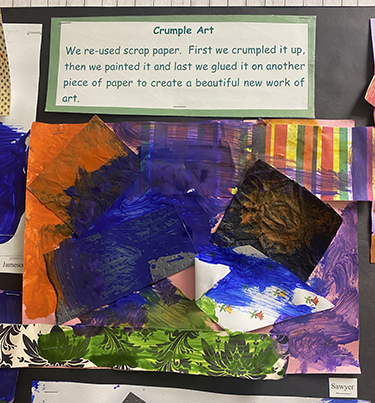Young students across the U.S. have better insights into climate change and how they personally have the ability to address it, thanks to an APHA reading program.
APHA’s Center for Climate, Health and Equity launched ECO Bookworms, a book club for “early climate optimists,” in February 2020. The club helps parents, caregivers and educators talk to children about the environment. Book selections offer messages of hope and action, along with relatable facts that help children understand climate change without feeling scared or overwhelmed. 
This year, APHA offered teachers and other educators the opportunity to choose one of our top five books, which the center provided for free. We received more than 100 requests for the books, which cover topics such as drought, energy conservation and youth action.
Most of the books were provided to elementary and preschool teachers. Educators were encouraged to create projects or activities with their books and share them with APHA.
Antonio Flores, a first-year teacher at the Risen Savior Lutheran Church School in Arizona, fostered positive climate change initiatives among his pre-K students. After reading from their ECO Bookworms book, “Old Enough to Save the Planet,” students reused scrap pieces of paper to create "crumple art.” Students set up a recycling center in their play area based on what they learned from the book.
Flores said he projected his personal passion for helping the planet to his students, which the children picked up on.
“The students wanted to feel the same way the characters in the book felt and they were inspired by their actions,” he said. “We are currently building a school garden, an idea the students had.”
Stella Rodriguez, an educator at Ann Arbor Open School in Michigan, read her ECO Bookworms choice, “Solar Story: How One Community Lives Alongside the World’s Biggest Solar Plant,” with her class. She said her students wanted to learn more about different types of renewable energy.
 “We had a project where they designed a house and had to power it using at least one type of renewable energy system,” Rodriguez said.
“We had a project where they designed a house and had to power it using at least one type of renewable energy system,” Rodriguez said.
Students had to think about where their house was located to decide the best type of energy source. They then used recycled materials to build a model.
“The book made the students want to learn about all different types of renewable energy like solar, wind, tidal and hydro,” Rodriguez said.
John Scott, an educator at Powhatan Elementary School in Baltimore, said his fifth grade students will be reading “Old Enough to Save the Planet” in January. Students will then research an environmental challenge and steps they can take locally to improve the problem.
“My hope is that the book will engage students in looking into environmental problems in the world that matter to them, to encourage them to research further and then inform others about steps that can be taken at a very local level to create positive change in our world,” Scott said.
APHA’s Center Climate, Health and Equity is sharing new ECO Bookworm club picks each month. We hope to engage more educators so that together we can inspire our next generation of early climate optimists and bookworms. The club is open to all — educators, parents and caregivers alike — and we invite you to join us.
Photos: Pre-K students from the Risen Savior Lutheran Church School in Arizona work on an activity for Earth Day. At bottom, a "crumple art" work by the children is displayed. (Photos by Antonio Flores)